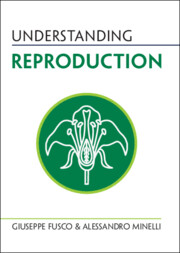Book contents
- Understanding Reproduction
- Series page
- Understanding Reproduction
- Copyright page
- Reviews
- Contents
- Foreword
- Preface
- Acknowledgements
- 1 Individuals and Reproduction
- 2 Reproduction in the Life Cycle
- 3 Reproduction Without Sex
- 4 Reproduction with Sex
- 5 Two-Parent Sexual Reproduction
- 6 One-Parent (or Nearly so) Sexual Reproduction
- 7 Development of Sexual Traits
- 8 Widening the View: Reproductive Strategies
- Concluding Remarks: Difficult Boundaries
- Summary of Common Misunderstandings
- References and Further Reading
- Figure Credits
- Index
6 - One-Parent (or Nearly so) Sexual Reproduction
Published online by Cambridge University Press: 27 July 2023
- Understanding Reproduction
- Series page
- Understanding Reproduction
- Copyright page
- Reviews
- Contents
- Foreword
- Preface
- Acknowledgements
- 1 Individuals and Reproduction
- 2 Reproduction in the Life Cycle
- 3 Reproduction Without Sex
- 4 Reproduction with Sex
- 5 Two-Parent Sexual Reproduction
- 6 One-Parent (or Nearly so) Sexual Reproduction
- 7 Development of Sexual Traits
- 8 Widening the View: Reproductive Strategies
- Concluding Remarks: Difficult Boundaries
- Summary of Common Misunderstandings
- References and Further Reading
- Figure Credits
- Index
Summary
A zygote does not necessarily derive from the fusion of gametes or gametic nuclei produced by different individuals. Both egg and sperm may instead be produced by the same individual, a sufficient simultaneous hermaphrodite (Chapter 4). In this case, the offspring has only one parent. However, the gametes that merge are the products of independent processes of meiosis undergone by different germ cells, although in the same individual: this distinguishes self-fertilization (or selfing) from some forms of parthenogenesis where there is the fusion of two of the four nuclei deriving from the same meiosis, as we will see in the next sections (Figure 6.1).
Keywords
- Type
- Chapter
- Information
- Understanding Reproduction , pp. 108 - 122Publisher: Cambridge University PressPrint publication year: 2023

